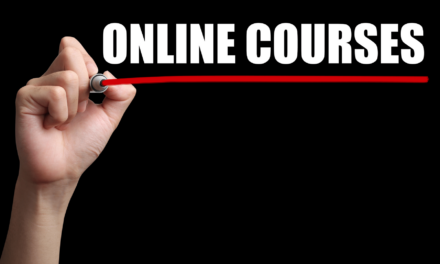
SEPTEMBER 6, 2022
In This Issue: As we head into the unofficial fall season, Joe talks about a new calendar concept. Plus, see the power of connections, and get the latest on circles, edits, and speed.
full tilt
Throw Out the Traditional Calendar
If you’ve read any of my stuff or listened to the Content Inc. podcast, you know I talk about the two things most critical to your content business success.
The first is a workable content tilt – usually an underserved niche or a unique content presentation.
The second is consistency. As a former print newspaper subscriber, I easily recall when I went out to my drive one morning to get the paper, and it wasn’t there. I was devastated. That morning, I went online, found a different source, and ended up canceling my paper’s delivery.
The point? If you set content delivery expectations with your audience and miss a delivery, your audience may leave and never come back.
Not sure if you’ve noticed, but quite a few YouTubers and other streamers have publicly declared they need a break from creating. I don’t think their decisions are unreasonable. Content creators need breaks to recharge and not go into deep burnout.
But what if you built a hiatus into your content business plan?
What if you didn’t need to publish every week?
What if you followed the model that’s worked for broadcast TV for a long time and streaming services in the modern day?
Break your content into seasons.
Adam Levy is publishing season 6 of his Mint podcast. This way, he batches content, publishes it, and creates a break between seasons. The season publishing schedule sets content delivery expectations with subscribers. This is much like what Stranger Things or Ted Lasso does. The seasons give the creator flexibility.
It works for newsletters, streams, blogs, etc. Instead of following a newspaper-like schedule (i.e., delivering every morning), you adopt a TV mindset (i.e., delivering fresh content in seasons).
A season strategy works in the Content Inc. model because you still deliver content consistently, setting and meeting the expectations of your audience.
Seasons also present more benefits than mitigating creator burnout.
You can pick a theme for each season. Or maybe you create a storytelling arc that entices your audience to watch, read, or listen to the next episode. You could even create a cliffhanger or set the stage so your audience eagerly anticipates the next season.
Within a season model, you also get to decide if you want the episodes to launch all at once (i.e., binge-watching) or to drop each one on a regular cadence.
And seasons are often easier to sell. Instead of selling sponsorships for a four-pack of podcast episodes, for example, you could sell multiple sponsors for a season. We’ve experimented with this idea, and you’ll see it in the podcast soon.
If you’re struggling with burnout or find your frequency consistency isn’t possible, seasons are the answer.
– Joe Pulizzi
Forget a Traditional Publishing Calendar, This Trick Can Bring Bigger Benefits
we stan for Dave Kratz
Entrepreneur: Dave Kratz
Biz: Krtzyy
Tilt: Game streaming with a personal connection
Scene: YouTube (13K), Instagram (24.6K), TikTok (89K), Twitch (105K), Twitter (156K)
Snack Bites:
- Dave’s resourcefulness has led to unexpected opportunities. A Tweet explaining their lack of lodging for TwitchCon led to an offer from a popular creator and a subsequent expansion of Dave’s network.
- He got his professional gaming streaming start on the invite-only server for Minecraft (SMPLive).
- Dave uses Twitter to connect personally with his audience and expand his professional network.
Why We Stan: Dave recognizes the power of connections to grow a content business. While he streams on Twitch, he also knows the marketing benefits of platforms like Twitter.
– Shameyka McCalman
Read The Story of Dave Kratz
Know a content creator who’s going full tilt? DM us. Or email [email protected].
things to know
Money
-
Don’t get it: A founder says investors took bets on the creator economy space without understanding it. They didn’t realize marketing to creators is challenging because each creator is different. (Insider)
Tilt Take: Taking on investors? Take on a forward-thinking and transparent pitch to educate them. If they’re surprised later, it won’t be good for business (or you). -
Know this term: Creator licensing is a term brands use for content creators giving them advertising permission to run ads through their social media handles. Brands have slightly more control over these paid ads than posted content. (Grin)
Tilt Take: It’s important to know the language your prospective clients speak.
Audiences
-
Need for speed: 85% of YouTube viewers who don’t opt for the default speed accelerate their experience – 1.5x is the most common, followed by 2x. (Social Media Today)
Tilt Take: Your audience may not consume your content the way you intended. Think about that when you create it. -
Get closer: Twitter Circle now lets you add up to 150 people (they don’t have to follow you) with whom you can share a tweet. (The Verge)
Tilt Take: It could be an interesting first step for creators who have or want to develop private, exclusive communities.
Tech and Tools
-
Change up: Twitter’s testing an edit button. Tweeters can edit a few times up to 30 minutes after the first post. Audiences will know it’s been modified with icons and timestamps. (CNN)
Tilt Take: Twitter plans to offer the feature to its paid (Twitter Blue) subscribers. Will the audience who’s been clamoring to edit their tweets be willing to pay for it? -
Be helpful: Google’s advice for better meta descriptions includes using a snippet from the article, summarizing the whole page, and being specific and detailed. (Search Engine Land)
Tilt Take: Always write meta descriptions and details from your targeted searcher’s point of view.
And Finally
-
Give them proof: Landing pages include claims and promises. But without social proof, your audience isn’t likely to believe them. (Marketing Examined)
Tilt Take: Add three testimonials, reviews, etc., to your main site this month, giving your prospects the confidence to convert. -
NFT take: Recently launched to the public, Koop helps creators launch NFT-based membership passes to raise money for their projects. Members then can vote on how to spend the group’s treasury funds. (Tech Crunch)
Tilt Take: NFTs have power far beyond digital collectibles.
the business of content
- The one strategy every content creator needs. (Content Inc. podcast)
- The Future of Truth Social (This Old Marketing podcast)
- What led to The Sweaty Startup’s huge success? (Podia)
- Create a powerful pitch deck. (Tech Crunch)
- Do you have an abundance or lack mindset? (Forbes)
the tilt team
Your team for this issue: Joe Pulizzi, Pam Pulizzi, Ann Gynn, Laura Kozak, Marc Maxhimer, and Dave Anthony, with an assist from Shameyka McCalman.
Get more of the Full Tilt stories on TheTilt.com.
Know a content creator who’s going full tilt? DM us or email [email protected]
Want to advertise on The Tilt? Go here.
Or email us at [email protected]
Interested in the tools we use? Check out our Tilt Tech Stack here.
Was this email forwarded to you? Get your own sub here.
Copyright ©2022 Tilt Media LLC All rights reserved.
Update your preferences | Unsubscribe | 17040 Amber Drive, Cleveland, OH 44111





